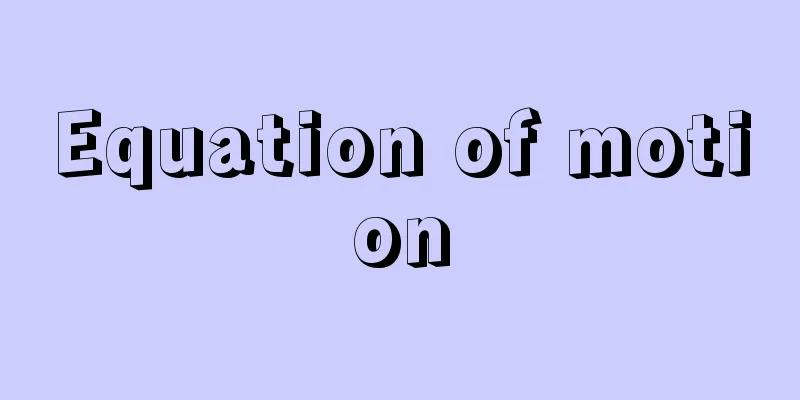Commentary on the Thirteen Sutras - Juusangyochuso

|
A collection of 13 commentaries on the Chinese Confucian scriptures, the sutras. The commentaries are the commentaries on the sutras that were created during the Han and Wei dynasties, and the commentaries on the sutras that were added during the Six Dynasties and the Sui and Tang dynasties. The Confucian academic community based its textbooks on the ancient books of "Poetry and Calligraphy" from the Western Zhou period onwards, which were highly valued by Confucius (Kongqiu). They also compiled scripts for the daily practice of "ritual and music" ("Ritual Lies") and their interpretations ("Book of Rites"), and during the Qin and Han dynasties they incorporated the "Book of Changes" and the "Spring and Autumn Annals" into their own "classic" books, forming the Six Classics along with their respective "biographies" (explanations). Emperor Wu of the Western Han Dynasty officially recognized "Poetry, Calligraphy, Rites, Music, Changes, and Spring and Autumn Annals" as the Six Arts (the sacred texts of the Fundamentals of State Learning), appointed scholars of the Five Classics as academic officials, and made the "Classics of Classics" the state religion. This led to Classics (the study of the interpretation of the scriptures) becoming an academic discipline in Confucianism. The Analects and the Book of Filial Piety supplemented the Five Classics as biographies, and they were called the Seven Classics. It was during the Han Dynasty that the Erya, the oldest dictionary for the Book of Poetry, was also included in the group of Classics of Classics. In the Later Han dynasty, the study of rituals was divided into the Three Rites (the Zhou Rites were added to the Yili and Liji), and the Spring and Autumn Annals was divided into Three Traditions (the Gongyang Chuan, the Guliang Chuan, and the Zuo Shi Chuan), also known as the Nine Classics. During the Six Dynasties period, when the study of the Three Mysteries was flourishing, the Taoist texts Laozi and Zhuangzi were regarded as classics, and the 30-volume Annotated Commentary on the Classics, a compilation of 14 types of scriptures with phonetic markings and literal annotations, was completed in the Sui dynasty. In the early Tang Dynasty, in response to the introduction of the imperial examination system (an examination for civil service recruitment), Kong Yingda and others compiled and compiled the "Yisu", which were interpretations and pronunciations of the commentaries on the classics, in other words, commentaries on the vast number of classics, into the officially authorized imperially commissioned collection of interpretations titled "Five Classics Zhengyi". These are the "Book of Changes in Zhou" (Zhengyi) in 14 volumes (with annotations by Wang Bi of the Wei dynasty and Han Kangbo of the Jin dynasty), the "Book of Shangshu" (Zhengyi) in 20 volumes (a biography of Kong Anguo of the Han dynasty), the "Mao Poetry" (Zhengyi) in 70 volumes (a biography of Mao Heng and an essay by Zheng Xuan of the Han dynasty), the "Book of Rites" (Zhengyi) in 70 volumes (annotations by Zheng Xuan of the Han dynasty), and the "Spring and Autumn Annals of Zhuo" (Zuo Zhuan) in 36 volumes (Jiu Du Yu Jiji). Jia Gongyan also compiled the "Commentary on the Lis of Zhou" in 50 volumes (annotations by Zheng Xuan of the Han dynasty) and the "Commentary on Rites" in 50 volumes (annotations by Zheng Xuan of the Han dynasty). At the end of the Tang Dynasty, Xu Yan's 28-volume "Commentary on the Spring and Autumn Annals of Gongyang" (He Xiu Jieqian of the Han dynasty) and Yang Shixun's 12-volume "Commentary on the Spring and Autumn Annals of Gu Liang" (Fan Ning's Compilation of Commentaries) were passed down, and in the third year of the Xiamping era (1000) of the Northern Song Dynasty, Xing Pei and others compiled 3 volumes of "The Book of Filial Piety and Zhengyi" (Commentary on Emperor Xuanzong of the Tang dynasty), 10 volumes of "Commentary on the Analects of Confucius" (He Yan's Compilation of Commentaries of the Wei dynasty), and 10 volumes of "Commentary on the Erya" (Guo Pu's Compilation of Commentaries of the Jin dynasty). In addition, the Confucian book "Mencius," which began to be revered in place of the "Laozi" and "Zhuangzi," was added to the Classics by Sun Zhong, who compiled 14 volumes of "Mencius Zhengyi" (annotated by Zhao Qi of the Han dynasty), and the "annotations and commentaries" based on the "ancient annotations" from the Han and Tang dynasties. Initially, it was published separately from the "annotated sutras" and took the form of a standalone "single commentary" book, but after the publication of the Southern Song Ten Lines book, the commentaries and interpretations were distributed to the sutra commentaries and were combined into one book, such as the Zhengde book and the Min book, and currently the complete collection with the "Collateral Records" by Ruan Yuan and others of the Qing Dynasty is in use. [Yoshiro Togawa] Source: Shogakukan Encyclopedia Nipponica About Encyclopedia Nipponica Information | Legend |
|
中国の儒教教典、経書(けいしょ)13種の「注疏」集成。「注疏」とは、漢魏(かんぎ)の間に成立した「経注(けいちゅう)」と、それに施された六朝(りくちょう)・隋唐(ずいとう)期の「義疏(ぎそ)」をいう。儒家学団は、孔子(こうし)(孔丘(こうきゅう))の推重した西周(せいしゅう)以来の古籍「詩・書」を根幹に、日常実習の「礼楽」用台本(シナリオ)(『儀礼(ぎらい)』)とその解釈書(『礼記(らいき)』)を課本(テキスト)に編成しつつ、秦漢(しんかん)の交(こう)には「易(えき)」と「春秋(しゅんじゅう)」をも自家の「経(けい)」書に組み入れて、それぞれの「伝記」(解説書)とともに六経(りくけい)を構成した。前漢の武帝がその「詩・書・礼・楽・易・春秋」を六芸(りくげい)(国家学原論の聖典)として公認し、五経(ごきょう)博士を学官にたてて「経伝」を国教化するに及んで、経学(けいがく)(経典解釈学)が儒教の学術となった。『論語』と『孝経(こうきょう)』が伝記として五経を補助し七経とよばれ、『詩書』用最古の辞書『爾雅(じが)』も経伝群に付属されるのは両漢の際であろう。 後漢では、礼学が三礼(さんらい)(『儀礼』『礼記』に『周礼(しゅらい)』が加わる)に、「春秋」が三伝(『公羊(くよう)伝』『穀梁(こくりょう)伝』に『左氏(さし)伝』が加わる)に分立して、九経(きゅうけい)とも称された。三玄(さんげん)の学が盛行した六朝期には、道家の書『老子(ろうし)』『荘子(そうじ)』が経書視されて、14種の経典を総合した音義(おんぎ)(字音標示と字義注釈)集成『経典釈文(しゃくもん)』30巻が隋(ずい)代に完成した。 唐初、科挙(官吏登用試験)制に対応して「義疏」である経注への諸解釈・音義類、つまり膨大な経書の疏解(コンメンタール)を、孔穎達(くようだつ)らが勅撰(ちょくせん)の公認解釈集『五経正義(せいぎ)』に改編し制定した。『周易(しゅうえき)正義』14巻(魏の王弼(おうひつ)注、晋(しん)の韓康伯(かんこうはく)注)、『尚書(しょうしょ)正義』20巻(漢の孔安国(こうあんこく)伝)、『毛詩(もうし)正義』70巻(漢の毛亨(もうこう)伝・鄭玄箋(じょうげんせん))、『礼記正義』70巻(漢の鄭玄注)、『春秋正義〔左氏伝〕』36巻(晋(しん)の杜預集解(どよしっかい))である。同じく賈公彦(かこうげん)が『周礼疏』50巻(漢の鄭玄注)、『儀礼疏』50巻(漢の鄭玄注)に編定。唐末には、徐彦(じょげん)の『春秋公羊伝疏』28巻(漢の何休解詁(かきゅうかいこ))、楊士勛(ようしくん)の『春秋穀梁伝疏』12巻(晋の范寧(はんねい)集解)が伝わり、北宋(ほくそう)の咸平(かんぺい)3年(1000)、邢昺(けいへい)らが『孝経正義』3巻(唐の玄宗御注(ぎょちゅう))、『論語注疏』10巻(魏の何晏(かあん)集解)、『爾雅疏』10巻(晋の郭璞(かくはく)注)を撰した。また「老荘」にかわって尊崇されだした儒家の書『孟子(もうじ)』に孫奭(そんせき)は『孟子正義』14巻(漢の趙岐(ちょうぎ)注)を撰して経書に加えられ、漢唐「古注」系の訓詁(くんこ)「注疏」が総合された。 初め「経注」本と別行して単独の「単疏」本の体裁をとったが、南宋十行(じゅうぎょう)本の刊刻以後、経注に義疏も釈文も分配されて合刻した書本、正徳(しょうとく)本、閩(びん)本などが通行し、現在は清(しん)の阮元(げんげん)らの『校勘(こうかん)記』を付した全集が使用されている。 [戸川芳郎] 出典 小学館 日本大百科全書(ニッポニカ)日本大百科全書(ニッポニカ)について 情報 | 凡例 |
>>: Zhoushan Archipelago - Zhoushan Archipelago
Recommend
Helmet with visor - Helmet with visor
This is a type of helmet from the Kofun period, us...
Red crab - Red crab
This crab belongs to the order Decapoda, class Cr...
Onan's Sin
... As for the second method, methods of contrace...
Kenzo Asahara
Labor activist. Born in Fukuoka Prefecture. While...
Prosodie
...In all national languages, which are classifie...
Contumax kobelti (English) Contumax kobelti
...Because they are abundant, they are used as ma...
Pillow Maniac - Pillow Maniac
The title of a Kyogen piece. A female Kyogen. The...
Trezini, D.
...After that, pontoon bridges and pontoon bridge...
Kawasaki Heiemon
1694-1767 (7th year of Genroku - 4th year of Meiwa...
Herlequin
…One of the most well-known clowns who appear as ...
Bethlehem Steel Corp.
The second largest integrated steel manufacturer i...
Fishery Foundation Mortgage - gyogyozaidanteito
… The first foundation mortgage systems establish...
Prosthetic engineering
…Some of these areas have already shown some prog...
Rhenium sulfide - rhenium sulfide
Compounds of rhenium and sulfur include rhenium su...
A Philosophical Essay on Probability
...The latter describes the theory of generating ...









